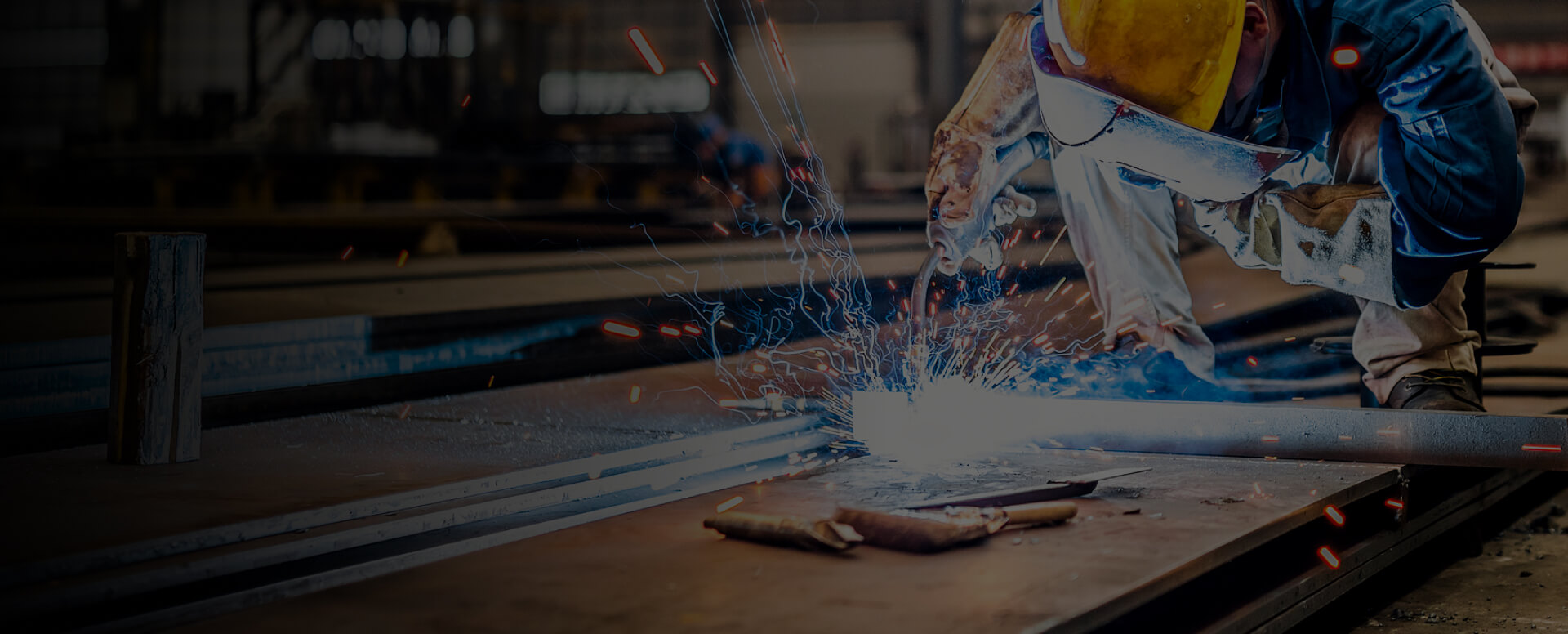
Due to issues with accessibility and the effect of gravity, overhead welding is widely regarded as the most difficult welding position.
Overview of Welding Positions
Welding positions define the orientation of the weld relative to the workpiece and significantly influence both the ease of welding and the quality of the final weld. The American Welding Society (AWS) has standardized these positions to ensure clarity and consistency across the industry.
Flat Position (1G and 1F)
The flat position is considered the easiest, as the workpiece lies horizontally and welding is performed from above.
1G (Groove Weld): Joining two metals by fusing their edges.
1F (Fillet Weld): Joining two metals at a right angle.
Horizontal Position (2G and 2F)
In horizontal position welding, the weld is performed on the side of the workpiece. Gravity can affect the molten pool, making it moderately challenging.
2G: Groove weld on a vertical surface with a horizontal weld direction.
2F: Fillet weld where two pieces meet horizontally or a horizontal and vertical piece are joined.
Vertical Position (3G and 3F)
Vertical welding requires moving the torch upward or downward. There is a risk of the weld pool sagging, increasing the difficulty.
3G: Vertical groove welding, often performed upward for better control.
3F: Vertical fillet welding, requiring careful technique to counteract gravity.
Overhead Position (4G and 4F)
Overhead welding is the most demanding position. The welder works beneath the joint, and molten metal tends to sag or drip, requiring high skill and control.
4G: Overhead groove welding.
4F: Overhead fillet welding.
Pipe Welding Positions (5G, 6G, etc.)
Pipe welding introduces additional complexity, especially when the pipe cannot be rotated.
5G: Fixed pipe position requiring the welder to work around the pipe.
6G: Pipe is positioned at a 45-degree angle, testing skills across all welding positions.
Key Challenges in Different Welding Positions
Success in welding depends on addressing challenges related to visibility, molten pool control, gravity, and heat management.
1. Accessibility and Visibility
Limited visibility and physical access can hinder weld quality, especially in overhead or vertical positions.
Solution: Use welding mirrors, cameras, or auto-darkening helmets (100–500) to improve the line of sight.
2. Weld Pool Control
Controlling the molten metal is critical in positions where gravity is a factor.
Solution: Adjust travel speed, use shorter arc lengths, and select appropriate filler materials (5–50 per pound).
3. Effect of Gravity
Gravity can cause sagging, dripping, or uneven weld beads in vertical and overhead positions.
Solution: Optimize technique and use high-viscosity filler metals.
4. Heat Management
Uneven heat distribution may lead to weak welds or warping.
Solution: Preheat the workpiece, use pulse welding settings, or invest in advanced welders (500–5000).
Why Some Positions Are More Difficult
Physical Strain and Ergonomics
Positions like overhead or vertical welding require uncomfortable postures, leading to fatigue and potential long-term health issues. Proper ergonomic equipment and regular breaks can help reduce physical strain.
Risk of Defects
Challenging positions increase the likelihood of defects such as:
Porosity: Trapped gas bubbles due to poor pool control.
Undercut: Incomplete fusion caused by metal flow issues.
Lack of Penetration: Shallow weld depth from limited access or improper technique.
Using correct parameters, filler materials, and techniques can help minimize these defects.
Tools for Welding in Difficult Positions
Welding Positioners
Positioners rotate or tilt the workpiece, allowing the welder to work in more comfortable and optimal orientations.
Rotating Positioners: Ideal for cylindrical objects like pipes.
Tilt-Rotary Positioners: Offer flexibility for complex geometries.
Benefits include improved weld quality, reduced operator fatigue, and higher productivity.
Conclusion
Overhead welding (4G/4F) remains the most challenging position due to gravity, accessibility issues, and the skill required to control the molten weld pool. Understanding the difficulties of each position and using the right techniques and tools are essential for achieving high-quality, consistent results across all welding applications.
Related Articles

Can MIG Welding Produce Strong Welds?
Yes, MIG welding is capable of producing strong and durable welds when performed correctly using appropriate techniques and parameters.Factors Influencing MIG Weld StrengthMIG (Metal Inert Gas) welding is valued for its versatility and efficiency. The strength of a MIG weld depends on several key fa

What Kind of Welding Is The Most Difficult on The Market?
Understanding Welding Processes and Key ChallengesWelding encompasses a variety of techniques, each suited to specific applications and materials. Among these, Gas Tungsten Arc Welding (GTAW), also known as TIG welding, is often regarded as one of the most challenging due to its high demand for prec

The High Costs And Key Limitations of Robotic Welding
The High Cost and Key Limitations of Robotic WeldingWhile robotic welding enhances efficiency and precision, it comes with significant expenses, requires specialized setup, and lacks human-like adaptability for complex or non-standard tasks.High Initial InvestmentAdopting robotic welding systems inv

What Are The Disadvantages of Tig Welding?
TIG Welding: Key Drawbacks and Comparisons with Other MethodsTungsten Inert Gas (TIG) welding, also known as Gas Tungsten Arc Welding (GTAW), is recognized for its precision and versatility in joining metals. However, it also presents certain limitations, including high skill requirements, slower op

